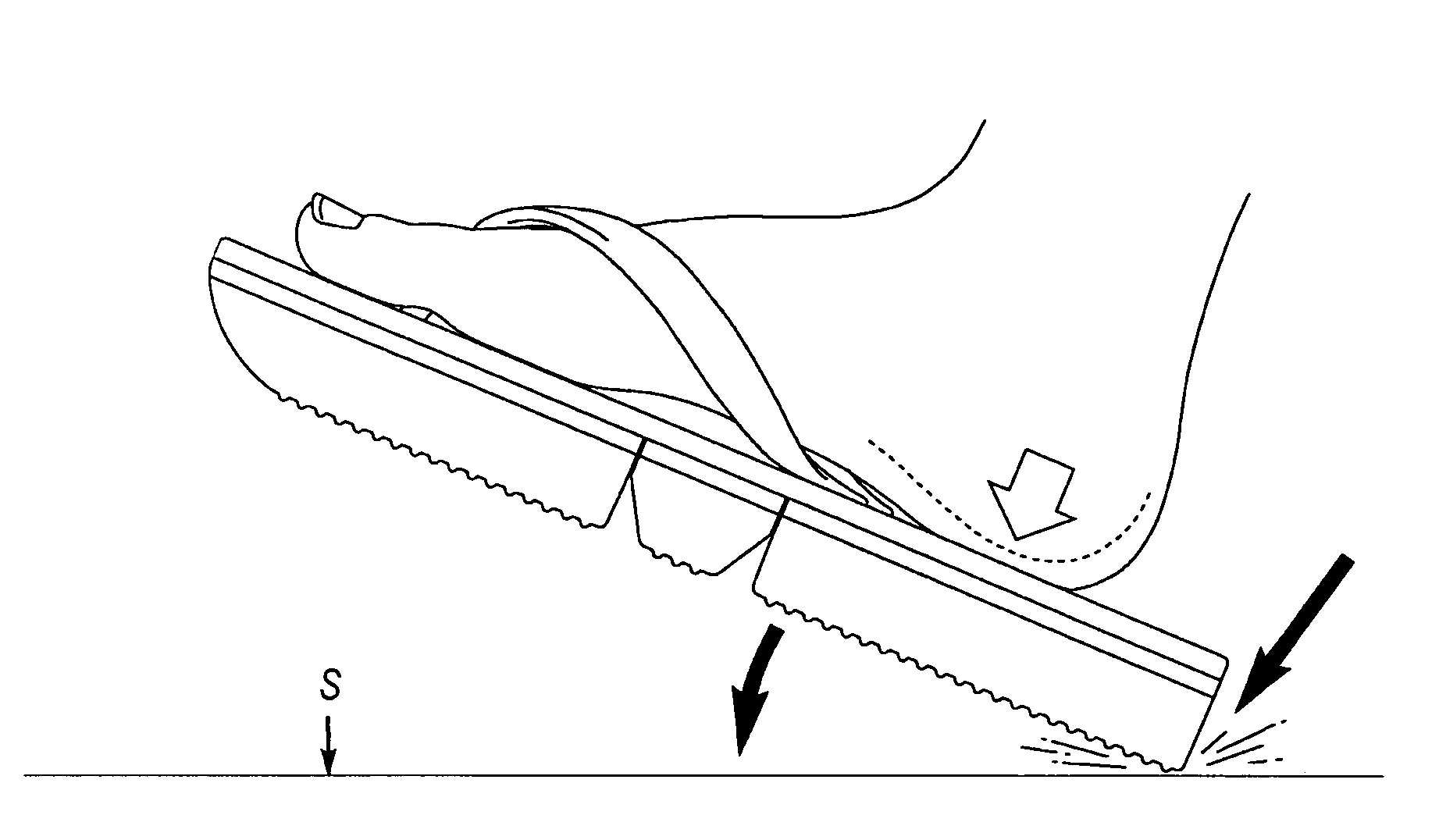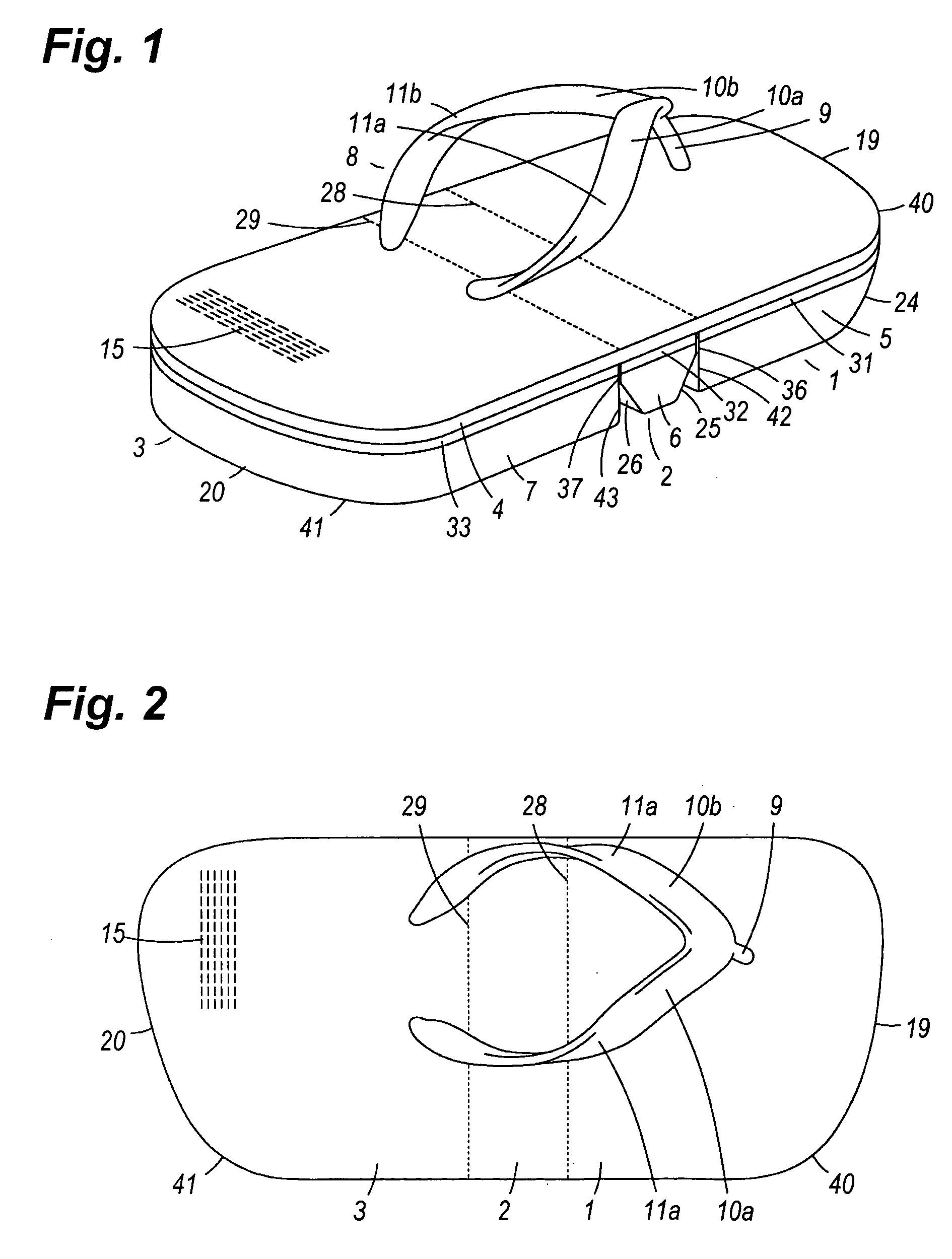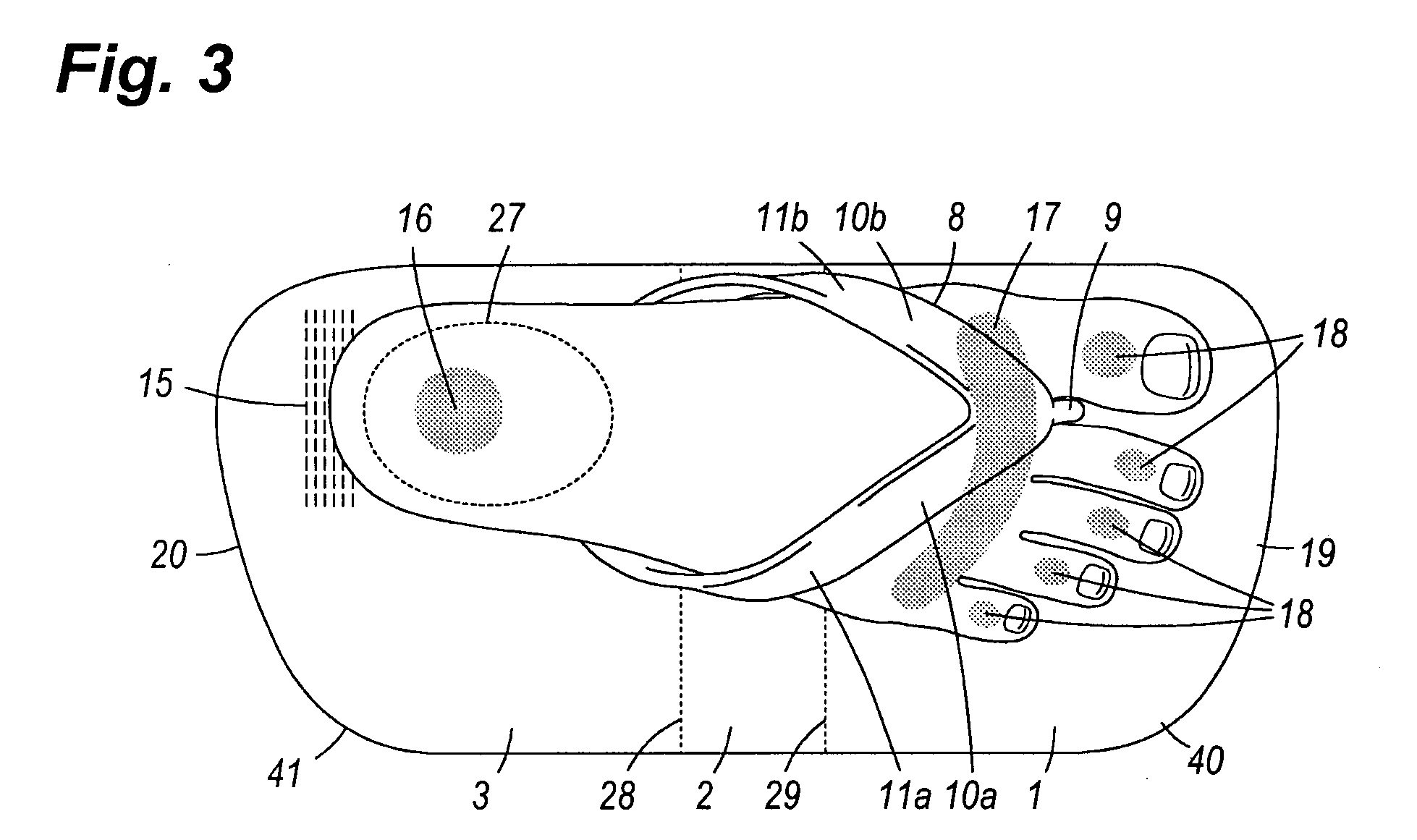Sand walking sandal
a walking sandal and sand technology, applied in the field of footwear, can solve the problems of insufficient square inches of sole surface area in contact with soft sand, accompanied by very serious side effects, and insufficient square inches of sole surface area to support the body's full weight, so as to reduce the discomfort of thongs, increase the number of square inches of sole surface area, and add flexibility
- Summary
- Abstract
- Description
- Claims
- Application Information
AI Technical Summary
Benefits of technology
Problems solved by technology
Method used
Image
Examples
Embodiment Construction
[0250] The first embodiment of the present invention, as shown in FIGS. 1 through 8F, is comprised of a conventional thong 8 and a flexibly-hinged, three-part, rigid sole system 1, 2, 3, which has extra sole length added behind the sandal-wearer's heel. These features interact to enable the employment of inverted mechanical leverage to eliminate deep foot sinking and thong pressure discomfort, both of which are long-time deficiencies of conventional rigid sole sandals and clogs when engaging in full-stride walking on very soft sand. The three-part sole 1, 2, 3 is also designed extra-wide to reduce foot sinking even more, by lowering the amount of body weight supported per-square-inch of sole. A combination of the inverted mechanical leverage action and the extra sole width virtually eliminates the deep foot sinking problem; and the flexibly-hinged, three-part sole 1, 2, 3 virtually eliminates the thong pressure discomfort problem.
[0251] The inverted mechanical leverage principles b...
PUM
 Login to View More
Login to View More Abstract
Description
Claims
Application Information
 Login to View More
Login to View More - R&D
- Intellectual Property
- Life Sciences
- Materials
- Tech Scout
- Unparalleled Data Quality
- Higher Quality Content
- 60% Fewer Hallucinations
Browse by: Latest US Patents, China's latest patents, Technical Efficacy Thesaurus, Application Domain, Technology Topic, Popular Technical Reports.
© 2025 PatSnap. All rights reserved.Legal|Privacy policy|Modern Slavery Act Transparency Statement|Sitemap|About US| Contact US: help@patsnap.com



